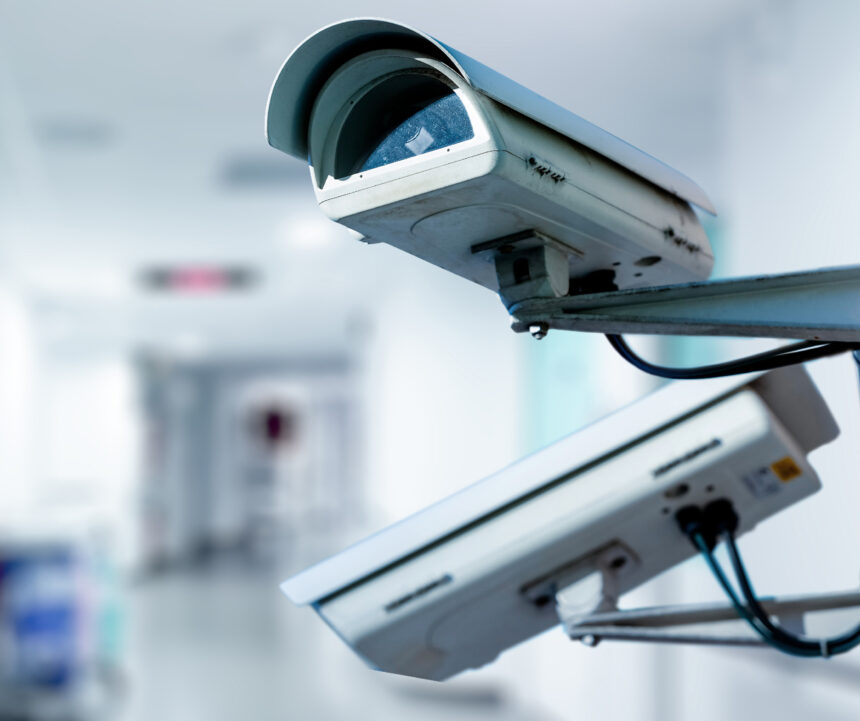Under Surveillance: How Cameras Help Defend Against Claims
All too often, an incident involving an injury to an employee or the general public occurs and THEN we consider ways to reduce the risk in order to prevent the incident from recurring. One slightly factious suggestion might be to “bubble wrap” all employees or visitors to your facilities, but it would be too costly, not to mention awkward.

On a more serious note, facilities put many preventative measures into place such as “wet floor” signs, non-skid rugs at entry points, non-skid shoes for employees and training for staff members on proper lifting techniques. While these measures have reduced the number of incidents, there are those individuals who will simply ignore warnings, requirements or training, even going so far as to try to “cause” an incident or injury.
Surveillance cameras are a very effective means of monitoring common areas. While cameras located in restrooms and patient rooms would be prohibitive, hallways, kitchens, lobby areas and entry/exit doorways are prime locations to have eyes available. Actual footage, proper time frames for storage and the safekeeping of video is of major assistance when we look at both claims and risk reduction.
The Claim: Captured On Camera
Consider a recent claim involving a new employee who was being introduced to the facility for orientation. The individual allegedly tripped and fell forward onto her left shoulder. The supervisor of this new employee, who walked slightly ahead, was the only witness to this event and did not actually see what happened.
Upon careful review of the surveillance cameras in the area, a clear picture of the event unfolded. The fall and injury were caused by the injured employee placing one foot directly in front of and on top of the other. There was nothing obstructing the path of the employee, and it appeared that she’d actually looked down at the precise moment of the event. She presumed there would be no “witnesses” as the supervisor did not see what occurred. Despite this, the video was the witness and allowed us to successfully defend the claim as an “intentional act.” Were it not for the surveillance cameras and preservation of the video, we may never have been able to successfully deny the claim.
While many incidents do occur in private areas such as restrooms or patient rooms, good coverage of surveillance cameras is quite beneficial when investigating alleged claims. When an incident is reported, isolate the footage and forward it to the claims investigator for review. In addition to either confirming a true accident or one that might be suspicious, the video may assist in reducing an unidentified risk.
Preventing Incidents
Preventing injuries in the workplace to staff members and patients/visitors is a difficult task. Because of this, it is important to remember that risk management is everyone’s responsibility. Enhanced Vision Systems (EVS), security and risk management cannot be everywhere to prevent these incidents. Below are helpful tips to utilize in the prevention of incidents.
- Use of surveillance cameras – Place as many as are affordable in approved areas. Ideally, footage should be traced back 30 days. Sometimes footage from just hours before an incident occurs can prove valuable in a litigation case.
- Camera location – Install cameras in hallways, corridors, entrance areas, break rooms, stairwells, exterior parking areas, sidewalks, outside of the emergency department and near vital outdoor equipment.
- Monitoring of surveillance cameras – It is best practice to have someone (preferably the security staff) monitor activity on the camera system for instant notification of an incident and to verify cameras are functioning and adjusted properly.
- Preserving the video evidence – As soon as an incident is detected on surveillance, securing and saving the footage is critically important. It is beneficial to go back an hour or so in the video to observe conditions leading up to the incident. Forwarding that video to an LHA Trust Funds representative as soon as possible will help in the determination of fault and defense of a possible claim and/or litigation.
- Detailed investigation – Assigning a group of trained staff members to respond and investigate incidents is important. Often, incidents are no fault of the facility. Asking the questions “are you okay” and “what happened” can sometimes determine fault. Good photos, surveillance video, time of day, weather conditions, identification of any hazards present, taking photos and witness statements are all critical parts of an investigation.
- Reporting of incidents – When in doubt, report incidents to LHA Trust Funds staff. We can advise whether an incident should be considered for a possible claim. The earlier we are notified, the sooner we can assist in the investigation and gather the information necessary for future response.
About The Authors

Alan D. Daigrepont is a Senior Claims Specialist providing claims handling during his 11-year tenure with LHA Trust Funds. He began his claims career after graduating from Louisiana State University and has 40 years of claims experience including workers' compensation, longshore & harbor workers, the Defense Base Act, general liability, and auto liability.

Glenn Eiserloh has more than 17 years of loss prevention and risk management experience. Mr. Eiserloh has a Bachelor’s of Science degree from the University of New Orleans in Finance with a concentration in insurance. He provides consultation services relative to workplace loss prevention, safety training, general liability risk reduction, worksite safety inspections and trend analysis.